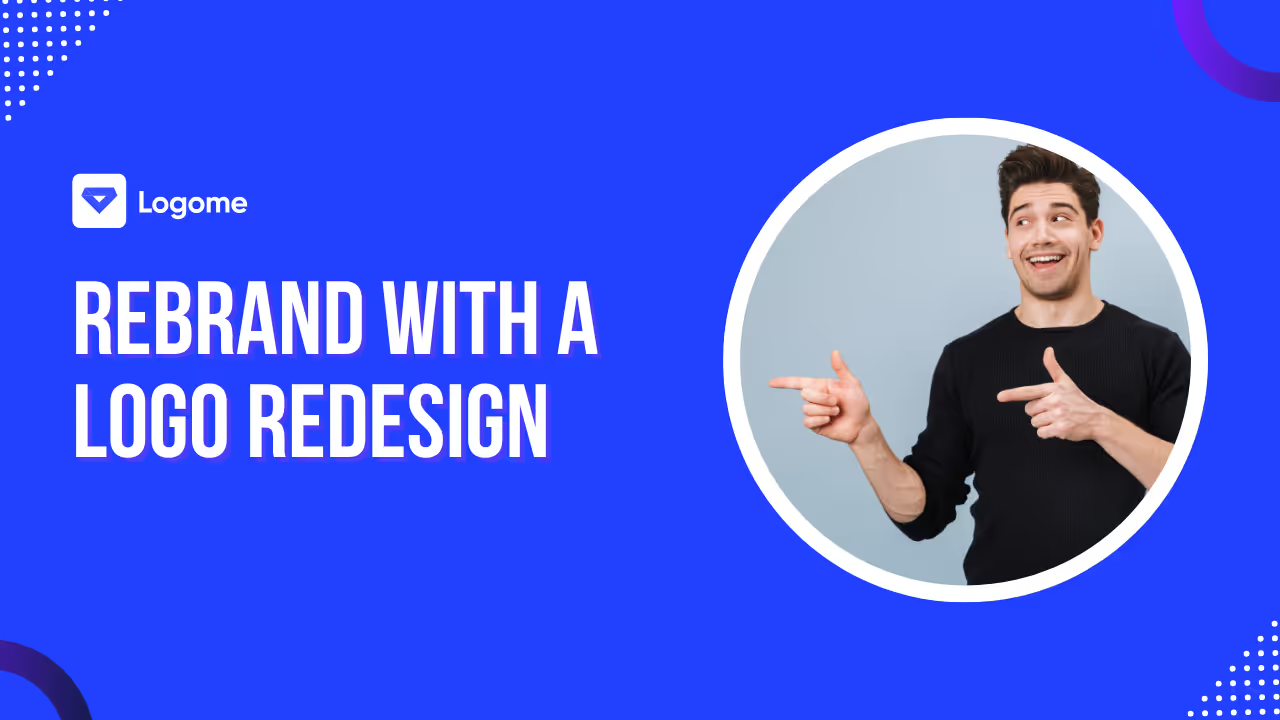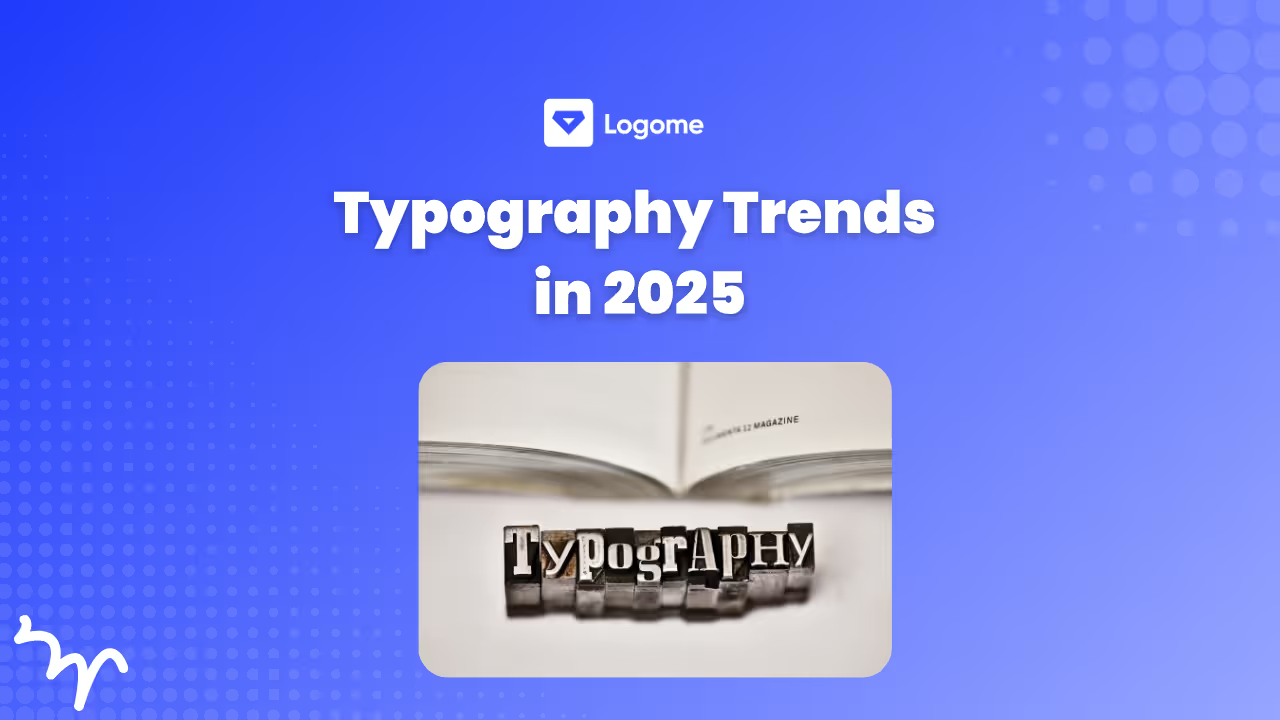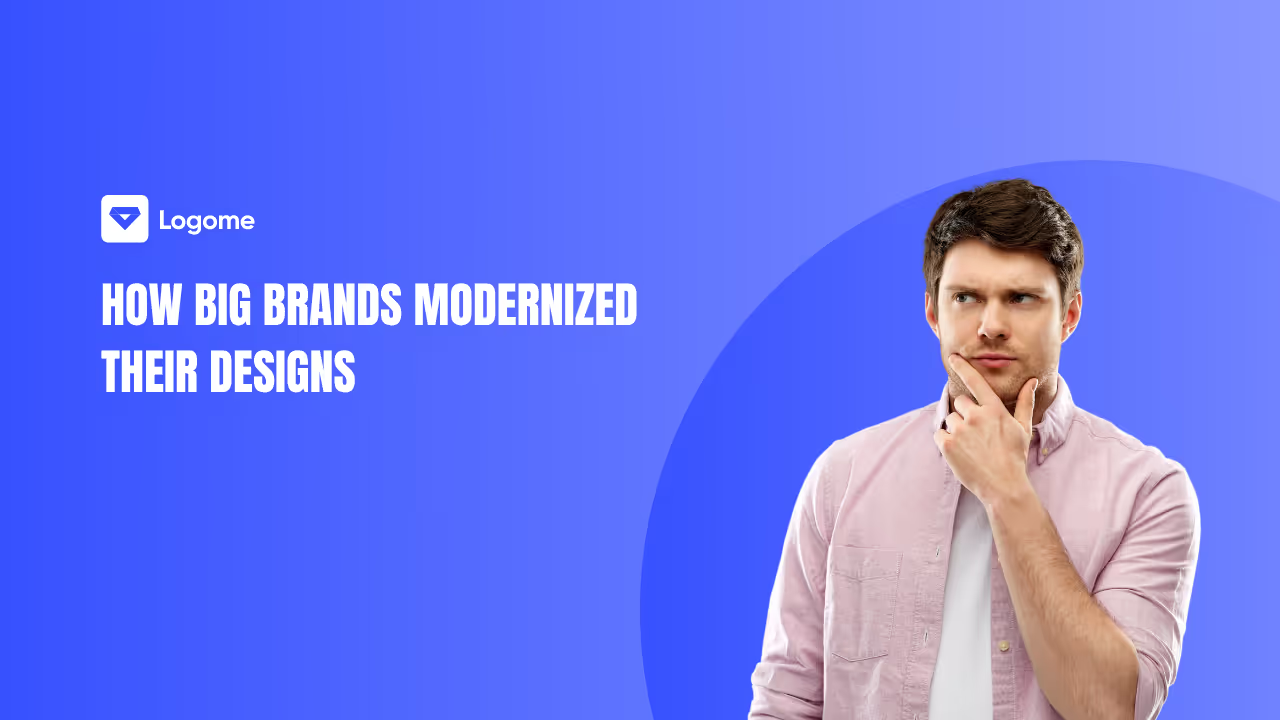Rebrand With a Logo Redesign: A Complete Guide for Modern Brands
Discover how to rebrand with a logo redesign that reflects your growth. Learn when to redesign, how to do it right, and what to avoid in this complete guide.
Discover how to rebrand with a logo redesign that reflects your growth. Learn when to redesign, how to do it right, and what to avoid in this complete guide.

When was the last time you looked at your logo and thought, “Does this still represent who we are?” If your brand has grown, evolved, or shifted direction, your logo might be lagging behind.
A logo isn’t just a pretty symbol. It’s your brand’s handshake—often the first thing people see and judge you by. And if that handshake feels outdated, confusing, or off-brand, it might be time to rebrand with a logo redesign.
This guide isn’t just about changing your colors or swapping fonts. It’s about rethinking how your visual identity tells your story. Whether you're pivoting your business, attracting a new audience, or just feel disconnected from your current look—this is where you begin.
Let’s walk through the why, when, and how of redesigning a logo that truly reflects the brand you’ve become.
Not every logo needs a makeover. But if yours feels like it's stuck in the past while your brand has evolved, it's worth asking some hard questions. In this section, we'll break down the real signs it's time for a change—beyond just “it looks old.”
Maybe you started as a small side hustle and now you're leading a growing team. Or perhaps your product offering has completely changed. If your logo still screams “2015 Etsy shop” but you're now serving global clients—something’s off.
Your visual identity should reflect your current positioning, not where you were years ago.
If people regularly ask, “Wait, what do you guys do again?”—that's a branding red flag. Your logo is part of that confusion. It should instantly give context, or at least spark curiosity, not questions.
A redesign can help clarify your purpose at a glance.
What looked great on business cards might fall apart on a smartphone. If your logo doesn’t scale well, lacks contrast, or feels cluttered on digital platforms—it’s not doing its job.
Your logo needs to breathe on Instagram, shrink into a favicon, and still look sharp on a billboard.
If you’re targeting a different demographic than when you started, your visual style needs to match their tastes. What appealed to college students five years ago may not resonate with today’s professionals or niche buyers.
Redesigning helps realign your identity with the people you're trying to reach now.
This one stings, but it’s real. If you’re avoiding putting your logo on proposals, pitch decks, or packaging—because it just doesn’t feel right—it’s time to stop patching and start redesigning.
Now that you’re starting to question your current logo, the next step is figuring out how deep the change needs to go. This isn’t always black and white. Sometimes, a small tweak is enough. Other times, a full transformation is what your brand truly needs.
Let’s break it down so you can decide what fits your situation best.
A refresh keeps the bones of your original logo but gives it a modern twist. Think updated fonts, simplified elements, or a shift in color palette.
This is perfect if your logo has strong recognition, but just feels slightly outdated. You’re not reinventing the wheel—you’re giving it new tires.
Even subtle updates can make your brand feel more polished and intentional without losing its identity.
This is where you rethink the entire visual system—icon, typography, colors, layout—but still stay connected to your core identity.
A logo redesign is great if you’ve outgrown your original look, need to connect with a new audience, or want to signal a shift in values or offerings.
This is also a good time to test out ideas using platforms like Logome, which lets you visualize modern logo styles tailored to your brand voice before you commit.
If your business has completely changed—new mission, new market, maybe even a new name—a full rebrand may be necessary. This goes far beyond the logo.
You’ll be redefining your messaging, tone, positioning, visuals, and more. It’s a reset, not a revision.
Choose this path only when the old brand truly no longer fits who you are—or where you’re going.
Once you’ve decided a redesign is the right move, the next question is: how do you actually do it right? This section walks you through a practical, step-by-step process to create a logo that looks great and aligns with your evolving brand.
Let’s take the guesswork out of it.
Before you touch anything design-related, take a step back. What does your brand stand for now? Has your mission changed? Are your customers the same people you targeted two years ago?
Conduct a quick brand audit. List out what works, what doesn’t, and what needs to evolve. Be honest.
Then, set clear goals: Do you want better visual consistency? Improved brand recall? More modern aesthetics? Know your “why” before jumping into “how.”
A logo doesn’t live in isolation—it competes for attention. Study what your top competitors are doing. What do their logos say about them? Are they clean and minimalist? Bold and expressive?
Now, ask yourself: how can yours stand out without looking out of place?
Also, keep an eye on current design trends—but don’t follow them blindly. Trends fade. Timelessness lasts.
This is where creativity kicks in. Start exploring what visual direction could represent your brand best. Should it be geometric and modern? Hand-drawn and warm? Icon-only or wordmark?
Moodboards help. Jot down adjectives that describe your brand. Then look for colors, fonts, and shapes that match that energy.
Now, translate those ideas into actual drafts. You can sketch, use design software, or leverage AI-powered platforms like Logome. It helps you generate industry-relevant logo concepts based on your brand personality—super helpful if you’re not a designer.
This is your sandbox phase—experiment, explore, and push boundaries.
You might love a design—but what matters is how your audience sees it. Run A/B tests. Share options with your team or loyal customers. Ask: Is it memorable? Does it feel like us? Can they tell what we do?
Small feedback loops now can save big regrets later.
Once you’ve chosen a final direction, create all the versions you’ll need: vertical and horizontal layouts, monochrome versions, and high-res formats for print and web.
Make sure you get vector files (like SVG or EPS). These keep your logo sharp at any size—from Instagram icons to billboard ads.
If you’re using Logome, you’ll get a full pack of these formats, ready to go.
A beautiful logo means nothing if it falls apart on a tiny screen or feels out of place on a product label. This section is all about ensuring your redesigned logo works everywhere—from mobile to merchandise—without losing impact.
Let’s make it flexible, functional, and unforgettable.
Your logo is the centerpiece, but your brand identity includes fonts, colors, spacing, and even the tone of your messaging. These elements should complement each other and feel like they belong in the same universe.
Consistency builds recognition. Inconsistency breeds confusion.
Your logo needs to shine on a mobile header, look crisp on social media, and hold its own on signage or packaging. It should scale without losing clarity or meaning.
If your logo relies heavily on small text or intricate details, simplify it. Consider creating icon-only versions for favicons, app icons, and tight spaces.
Modern logos often come in multiple configurations—horizontal, stacked, icon-only, dark-mode friendly. These allow you to stay on-brand no matter the platform.
With Logome, you can easily generate these alternate versions automatically, so you’re not stuck resizing things manually later on.
Make sure your logo has versions that work on light and dark backgrounds. Also, check for accessibility—can someone with color blindness still understand your logo?
Test your design in both black and white. If it still holds up, you're on the right track.
A logo redesign without a style guide is like giving someone the keys to a car without a map. They’ll get lost. A style guide ensures everyone—from your team to your freelancers—uses your new logo the right way, every time.
This section helps you build one that actually gets used.
Start with the basics: your logo variations, spacing rules, and where (and how) to use each version. Define minimum sizes, backgrounds it works on, and what not to do (like stretching, distorting, or using the wrong colors).
Then, go deeper: include your brand fonts, primary and secondary color palettes, iconography styles, and even brand voice or tone guidelines. This ensures your entire brand feels cohesive—online and offline.
Don’t overload your guide with jargon. Keep it visual. Show examples of correct vs. incorrect usage. Make it a tool, not a textbook.
Host it somewhere easy to access. Share it with everyone—designers, developers, marketers, even new hires. Consistency starts with communication.
.avif)
If you’ve used Logome to design your logo, you’ll already have a starter brand guide included. It covers color codes, font pairings, and logo variations—making it easier to roll out a professional visual identity from day one.
It’s a shortcut that saves time without cutting corners.
Redesigning your logo is a big step—but launching it the right way is what turns heads and earns buy-in. This section is about making your rollout feel intentional, not abrupt, and turning it into a branding moment worth talking about.
Let’s help your new logo make the entrance it deserves.
Before you update anything public-facing, start in-house. Share the new logo with your team. Explain why the change happened, what it represents, and how it supports the company’s vision.
When your employees understand the ‘why,’ they become brand ambassadors—not confused bystanders.
Update all internal docs, templates, slides, and tools. From Slack to Notion, make the new look feel like second nature internally.
Now go public—but don’t just swap the logo and hope no one notices. Create anticipation. Post teasers on social media. Share a behind-the-scenes look at the design journey. Tell the story behind the change.
When people feel included in the process, they connect more deeply with the result.
Have all your branded assets ready: website header, email templates, packaging, business cards, app icon, favicons, ad creatives. Roll everything out at once to avoid a disjointed experience.
Use a blog post, a launch email, or even a video to walk people through the redesign. What inspired it? What stayed the same? What’s new? Transparency builds trust—and gives your audience a reason to care.
Don’t just show the logo. Show what it means.
Once your new logo is out in the wild, your job isn’t done. Now it’s time to find out if it’s doing what it’s supposed to—building trust, improving recognition, and aligning with your goals.
This section will help you track the real impact of your logo redesign, beyond just looks.
Start by defining what success looks like. Are you aiming for increased brand recall? Better engagement on social media? Higher conversion rates on landing pages?
Pick a few clear metrics and track them before and after the redesign. This gives you something concrete to measure against.
Data is great—but honest feedback is gold. Run surveys. Ask your customers what they think. Use polls on Instagram or LinkedIn to get input on the new design.
Look for patterns in the comments: Do people say it feels more modern? More professional? More aligned with what you do?
After the launch, monitor how people interact with your brand. Do your social posts perform better? Are people spending more time on your site? Has email open or click-through rate improved?
Even subtle shifts can tell you if your visual identity is helping—or hurting—your message.
Not every redesign sticks perfectly the first time. That’s okay. Keep an eye on how the logo performs across different platforms. If something consistently looks off, be willing to adjust.
It’s better to refine early than stay stuck with something that misses the mark.
A logo redesign isn’t just about a new look—it’s about telling a new story. Done right, it’s one of the most powerful ways to signal growth, shift perception, and connect more deeply with your audience.
Whether you’re evolving your brand or redefining it entirely, taking the time to rebrand with a logo redesign shows that you’re thinking long-term. It's not about trends—it’s about building trust, clarity, and consistency across every touchpoint.
You don’t need to do it all alone. With smart tools like Logome and a clear step-by-step approach, you can confidently bring your visual identity into its next chapter—without losing the heart of what made your brand meaningful in the first place.
Your logo is often the first thing people see. Let’s make sure it feels just right.
You should consider a redesign if your logo feels outdated, your audience has shifted, your offerings have evolved, or your branding no longer reflects your mission or values.
A refresh is a light update—tweaking fonts, colors, or layout. A full redesign rethinks the entire logo concept to better align with a new direction or identity.
It usually involves auditing your current brand, researching competitors, ideating concepts, drafting designs, testing with feedback, and finalizing formats for different platforms.
Brands typically refresh their logo every 3–5 years and consider a full redesign every 7–10 years, or sooner if there’s a major shift in business strategy or audience.
Risks include confusing your audience, losing brand recognition, or disconnecting from your identity. These can be avoided by making strategic, well-tested changes.



Discover how 500,000+ businesses and creators are using our AI logo maker in their Logo creation.



